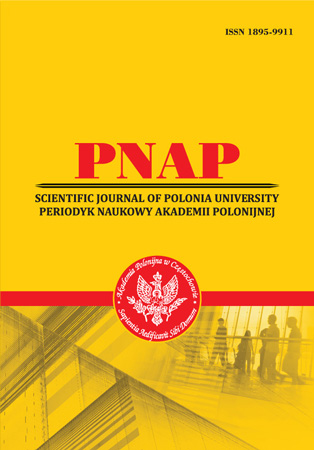THE IMPACT OF BALLROOM DANCING ON THE LEVEL OF PHYSICAL HEALTH OF THE INDIVIDUAL
Abstract
The article is devoted to examining the impact of ballroom dancing on the level of physical health of the individual. As health-promoting activities increasingly gain attention in contemporary society, this study aims to provide empirical data on the benefits of dance as an alternative to traditional forms of exercise. Specifically, the primary objective of the research is to measure and analyze key morpho-functional indicators of health, such as cardiovascular fitness, muscular strength, and general vitality, to assess whether ballroom dancing can offer a holistic approach to improving individual health. The methodology employed for this study was a longitudinal research design. The study was conducted among students aged 17–20 during the academic years 2021–2022 in an educational institution in Lviv. Fourteen students participated, consisting of an even gender distribution – 7 females and 7 males. Various health indicators were measured at the beginning of the study and after an 8-month period of regular ballroom choreography training. Quantitative methods were used to collect data, including standard tests like the Ruffier index and the Robinson index, which were then statistically analyzed to ascertain any significant changes. The findings indicate a significant improvement in several health metrics. For instance, there was a notable increase in cardiovascular health as indicated by the Ruffier index. Though there were no significant changes in the Robinson index, there was a tendency towards positive dynamics, suggesting that the impact of ballroom dancing may require more nuanced investigation under different states of physical stress. Overall, the results demonstrate that ballroom dancing contributes positively to several aspects of physical health. The practical implications of this research are far-reaching. Given the generally negative attitudes towards traditional physical education classes, ballroom dancing could serve as an effective and more engaging alternative. As novice dancers can achieve a decent level of preparation without much difficulty and as the dance movements involve multiple muscle groups and cognitive functions, this form of exercise is both enjoyable and beneficial.
References
2. Schroeder, K., Ratcliffe, S.J., Perez, A., Earley, D., Bowman, C., Lipman, T.H. (2017). Dance for Health: An Intergenerational Program to Increase Access to Physical Activity. J. Pediatr. Nurs, 37:29–34. doi: 10.1016/j.pedn.2017.07.004.
3. Vaccaro, M.G., Izzo, G., Ilacqua, A., Migliaccio, S., Baldari,C., Guidetti, L., Lenzi,A., Quattrone, A., Aversa, A., Emerenziani, G.P. (2019). Characterization of the Effects of a Six-Month Dancing as Approach for Successful Aging. Int. J. Endocrinol, 1–7. doi: 10.1155/2019/2048391.
4. Koutedakis, Y., Jamurtas, A. (2004) The Dancer as a Performing Athlete. Sports Med, 34:651–661. doi: 10.2165/00007256-200434100-00003.
5. Rehfeld, K., Müller, P., Aye, N., Schmicker, M., Dordevic, M., Kaufmann, J., Hökelmann, A., Müller, N.G. (2017). Dancing or Fitness Sport? The Effects of Two Training Programs on Hippocampal Plasticity and Balance Abilities in Healthy Seniors. Front. Hum. Neurosci, 11:305. doi: 10.3389/fnhum.2017.00305
6. Sohn, J., Park, S.-H., Kim, S. (2018). Effects of DanceSport on walking balance and standing balance among the elderly. Technol. Heal. Care.26:481–490. doi: 10.3233/THC-174760
7. Lakes, K. D., Marvin, S., Rowley, J., Nicolas, M. S., Arastoo, S., Viray, L., … & Jurnak, F. (2016). Dancer perceptions of the cognitive, social, emotional, and physical benefits of modern styles of partnered dancing. Complementary Therapies in Medicine, 26, 117–122. https://doi. org/10.1016/j.ctim.2016.03.007
8. Kattenstroth, J.-C., Kalisch, T., Kolankowska, I., & Dinse, H. R. (2011). Balance, sensorimotor, and cognitive performance in long-year expert senior ballroom dancers. Journal of Aging Research, 2011, 1–10. https://doi.org/10.4061/2011/176709
9. Kattenstroth, J.-C., Kalisch, T., Holt, S., Tegenthoff, M., & Dinse, H. R. (2013). Six months of dance intervention enhances postural, sensorimotor, and cognitive performance in elderly without affecting cardio-respiratory functions. Frontiers in Aging Neuroscience, 5, 5. https:// doi.org/10.3389/fnagi.2013.00005
10. Teixeira-Machado, L., Arida, R. M., & Mari, J. D. J. (2019). Dance for neuroplasticity: A descriptive systematic review. Neuroscience and Biobehavioral Reviews, 96, 232–240. https:// doi.org/10.1016/j.neubiorev.2018.12.010
11. Müller, P., Rehfeld, K., Schmicker, M., Hökelmann, A., Dordevic, M., Lessmann, V., … & Müller, N. G. (2017). Evolution of neuroplasticity in response to physical activity in old age: The case for dancing. Frontiers in Aging Neuroscience, 9, 56. https://doi.org/10.3389/ fnagi.2017.00056
12. Koutedakis, Y., & Jamurtas, A. (2004). The dancer as a performing athlete. Sports Medicine, 34, 651–661. https://doi.org/10.2165/00007256-200434100-00003
Abstract views: 802 PDF Downloads: 384







